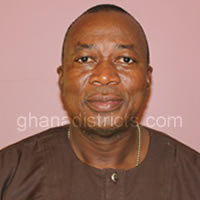Introduction
The composition of the population of any nation greatly influences the policies and strategies that are formulated at the national level to better the lives of the people in a sustainable way. Knowing the population characteristics of the district is vital as it informs the kind of developmental goals, objectives, strategies, programmes and projects that are arrived at in order to bring about development to the district.
This chapter looks at some important population characteristics of the Binduri District. These characteristics are the size and distribution of the population, age and sex structure, age dependency ratios, migration, fertility, and mortality.
Population Size and Distribution
Table 2.1 shows that the district has a total population of 61,576. More than half of the population (51.9%) are females with 48.1 percent being males. The age cohort with the highest proportion of the population is 5-9 with 16.0 percent of the population. The least populated age cohort is 5-9 with 0.1 percent of the population. It is also worth noting that the district has a youthful population constituting 43.9 percent of the entire population.
The sex ratio (number of males per the number of females) for all age groups is approximately 92.6. This means that for every 100 females there are approximately 93 corresponding males in the district. Table 2.2 shows that the male population in the district for age group 0-14 (14,094) is greater than the female population (12,964) for the same age category. However, the reverse is the case for age groups15-64 and 65 years and above which have female populations of 16,198 and 2,802 respectively as compared to the male populations of 13,286 and 2,232 respectively. This explains why the sex ratio decreases from 108.7 for age group 0-14 to 82.0 for age group 15-64, and further drops to 79.7 for population 65 years and older.
From Table 2.2, the total dependency ratio is 108.8. This means that every 100 persons in the working age group (15-64) cater for approximately 109 persons. The total male dependency ratio is higher (122.9) than that of the female (97.3). This means that every 100 persons in the working age group, caters for approximately 123 males and 97 females. It is also worth noting that there are many more child dependants (91.8) than old age dependants (17.1). It is however interesting to note that male dependency for children (106.1) is more than that of female dependency (80.0) for children, whereas the opposite is the case for old age dependency. This implies that, there are more male than female children to be catered for, while there are more female than male old persons to be catered for.
Population Pyramid
A population pyramid presents in a form of a figure, the age and sex structure of the population. Figure 2.1, shows that the population pyramid of the district is conical in nature with a broad base (from 0-4 to 20-24) which smoothens out gently in a decreasing manner up to the middle age groups (from 25-29 to 50-54). It then roughens upwards for the next three age groups (from 60-64 to 70- 74) and smoothens out almost evenly for the last three age groups (from 75-79 to 85+). From this observation, it is clear that the population of the district is generally youthful in nature with the large bars appearing for age groups of 0-4 to 60-64. It can also be observed that the longest bars in the youthful age cohorts appear in the 5-9 year group. This implies that most development strategies should be targeted at the younger population. There is however a deviation of the bars in age groups 60-64 and 70-74 which are longer than their preceding age group.
Generally, the sex distribution of the population is almost even throughout the pyramid with age groups 60-64 and 70-74 showing that females conspicuously outnumber males in those age groups.
Fertility, Mortality and Migration
Fertility
Fertility rate measures the number of live births of women. The fertility rate of any district is an important index for projecting the population of the district. Table 2.4 further shows that Binduri District has 13,367 women in the reproductive age group of 15-49 years. Out of this number, only 9.7 percent are reported to have given birth in the last twelve months. The total fertility rate (3.6) and the general fertility rate (105.1) are higher than the regional average of 3.4 and 97.5 respectively. The district has one of the highest fertility rates in the region. However, the crude birth rate of the district (21.2) is lower than the regional average of 22.7 indicating that there are more live births per every 1,000 women in the region than there are in the district.
Table 2.5 shows the number of children ever born to females twelve years and older and the number of them that are surviving in the Binduri District. The total number of females twelve years and older is 21,279. The number of children ever born is 70,951. Out of the total number of children ever born, 60,289 are surviving with the number of male children surviving (30,395) higher than the number of female children surviving (29,894). Women 60 years and older (3,764) are more than women in each of the other age groups. This explains perhaps why there are many more number of children ever born as well as the number of them surviving by this age group. The age group with the least number of women (672) in the district is 55-59 years. Generally, the number of children ever born for both sexes increases sharply from the 12-14 year group (6) up to age group 35-39 years (8,267). Thereafter, it decreases marginally until age group 50-54 years (7,240) and drops more sharply to 4,111 at age group 55-59 years. It then increases sharply again to 22,447 at age group 60 years and older. A similar trend can be observed with children surviving for all the age groups beginning from the 12-14 year group.
Date Created : 11/18/2017 5:09:05 AM





 facebook
facebook X (twitter)
X (twitter) Youtube
Youtube +233 593 831 280
+233 593 831 280 0800 430 430
0800 430 430 GPS: GE-231-4383
GPS: GE-231-4383 info@ghanadistricts.com
info@ghanadistricts.com Box GP1044, Accra, Ghana
Box GP1044, Accra, Ghana